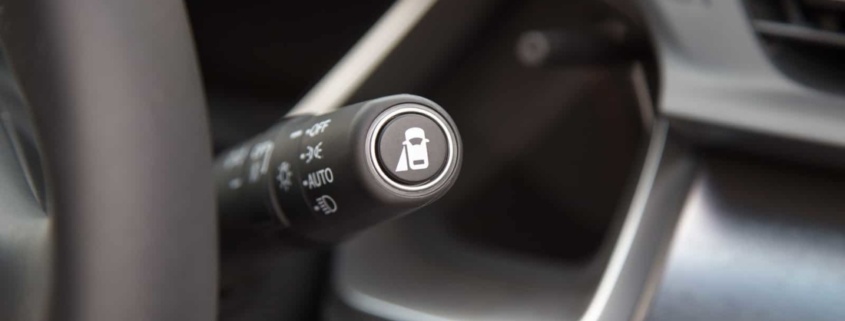Best New Car Safety Features Available in 2015
We’ve all seen the reports about Google working hard to create a user-friendly, safe, self-driving car. Although they’re still years away from becoming affordable and readily available in the marketplace, some of their technology has been available on mainstream vehicles.
Airbags are now required by law, along with seatbelts, antilock brakes, traction control, stability control, and backup cameras. Many of today’s cutting-edge driver-assistance features are likely to become mandatory.
Table of Contents
Safety Technology
When automobile shopping online, safety may be a priority to you. There have been some significant advances in tech systems on vehicles.
Technology such as backup cameras and crash-avoidance systems will allow a car to “become aware” of pedestrians or other vehicles before they’re in the driver’s view. These computer systems will anticipate (at a much faster pace) some types of collisions by automatically applying the brakes to avoid a crash and even prevent you from crossing lanes into oncoming traffic.
For years, luxury vehicles have been equipped with features like forward-collision warning systems. This type of safety feature is just starting to appear on mainstream conventional vehicles and is something you may want to consider when buying a new car.
1,700,000
Estimated rear-end collisions annually.
As of 2015, the Insurance Institute for Highway Safety (IIHS) has recognized the life-saving possibilities of crash-avoidance systems. Vehicles must have an automatic braking system, a front-crash warning system, and excel in crash tests to be classified as an IIHS Top Safety Pick Plus. In addition, the “auto-brake” feature must function correctly in IIHS formal track tests to qualify.
The good news is that the government’s National Highway Traffic Safety Administration (NHTSA) is looking into making many of these safety features mandatory. These systems don’t yet influence the Administration’s 5-Star Safety Ratings, but they most likely will in the future.
As you can guess, many of these safety features come only on vehicles with higher trim levels or additional option packages. Cost can be an issue, but it’s definitely worth the extra money if you can afford it.
How Crash-Avoidance Systems Work?
Consumer Reports did a study on various crash-avoidance systems. Their tests found a fine line between helpful and backseat drivers. If a system constantly provides false or inappropriate alerts, the driver will shut off or disable the system, making it as useless as not having it in the first place.
Crash-avoidance systems use various lasers, sensors, cameras, short and long-range radar, or a combination of all the above. Computers monitor what’s happening around the vehicle at all times; when appropriate, the system will prompt action from the driver and the car.
Some of these actions may be “attention-grabbers,” such as flashing lights or beeps. Some may even be a vibration in the seat, steering wheel, or a tug on the seatbelt. Some “high-tech” systems will even apply partial or complete braking if a collision is imminent and the driver does not respond.
According to the NHTSA Estimates
204,000 injuries and 100 fatalities could have been prevented by forward-crash-avoidance technologies.
David Zuby, chief research officer at IIHS, states, “Even in the cases where these systems failed to prevent a crash, if there’s automatic braking going on, or if the driver brakes in response to a warning. That crash will be less severe than it would have been otherwise.”
The bottom line is that the technology is not perfect. Road dirt, grime, and weather can block cameras and radar. However, crash-avoidance systems can and have prevented a lot of collisions from happening. But even with all these additional safety features, the number one thing we need to do as drivers are, STAY ALERT.
Best New Car Safety Features Available in 2015
Some vehicles come with crash avoidance systems, and some do not. Consumer Reports did a recent study to find out which ones you should look for and which you can live without.
1) Drowsiness Detection
This technology determines whether the vehicle’s driver is beginning to get tired or fall asleep. These alerts may be by a tap on the brakes, tug on the shoulder belt, audible chime, or a cup-of-coffee icon on the instrument panel. This tech is still in the “new” phase; CR did not experience any problems with the systems they tested.
Drowsy detection may also prevent drivers from looking down to check email or text and detect if you’re wandering back and forth in your lane.
2) Rear Mounted Camera
Rear view cameras help prevent back-over collisions, such as running over an object or a small child playing behind a vehicle. Back camera technology (back-up cameras) will become mandatory in May 2018.
Rearview cameras are great for lining up trailers or backing into tight spaces. They’re a “must-have” on pickups and SUVs, with substantial blind spots behind them.
3) Adaptive Headlights
Adaptive headlights illuminate the road while going around turns and corners. They swivel and react as you turn the steering wheel. In 2014, the IIHS found that adaptive headlights improved a driver’s reaction time by one-third.
There are mixed feelings about headlight technology. The wider illumination can be helpful, but the motion of the lights can be distracting, especially if the swivel and the steering are not synchronized perfectly.
4) Rear Cross Traffic
This system uses radar sensors mounted on the sides of the rear bumper. When the vehicle is in reverse, the system can tell you of approaching collisions from the sides. More advanced systems can alert you of pedestrians, shopping carts, and bicycles passing towards the rear of your vehicle.
The bottom line is that rear cross-traffic radars are an excellent safety technology to install on your vehicle.
5) Pedestrian Detection and Braking
This technology can detect and recognize a person entering the vehicle’s path. Some systems will even automatically apply the brakes or bring the car to a complete stop. This tech was invented by Volvo and is now being offered by other automakers. Some of the more advanced systems can also recognize bicyclists.
Pedestrian detection and braking are great safety features, especially if you live in an area with a high population.
6) Forward-Collision Warning (FCW) and Auto-brake
These systems are also called “Precrash-Mitigation Systems.” They may use stand-alone or a combination of laser, radar, or cameras to look ahead and warn drivers of an approaching accident by an audible, visual or physical cue. If the driver ignores the warnings, some of these systems automatically apply the brakes or take other steps to prepare for impact. Some more advanced techniques will respond anywhere from highway to walking speeds.
If you’re looking for a vehicle with FCW, look into the systems that will allow you to adjust your following distance.
7) Lane-Departure Warning (LDW) and Steering Assist
Most LDW systems use cameras to look for lane makers and monitor where you’re at in your lane. If you start to stray over the line without signaling, you’ll feel a vibration in the steering wheel or seat or hear an audible warning tone. More advanced systems, called “Lane-Keeping-Assist” (LKA), will apply the brakes or slightly nudge the steering wheel to get you to adjust back over into your lane if you are wandering.
LDW systems tend to be more beneficial on highways than on winding, tight country roads, where they tend to warn you too often. CR also prefers the systems that make corrections by alerting you through the steering wheel, not the brake system.
8) Blind Spot Monitoring and Assist
This technology uses cameras or radars to look (scan) the areas you can’t easily see behind and beside you. The system looks for vehicles lurking or entering your blind zones. An icon is illuminated in or near the appropriate side-view mirror when a car is detected.
If signaling while a vehicle is in your blind spot, some systems send a louder or stronger alert, such as a louder audible tone or blinking light. Newer, more advanced techniques will help keep you from changing lanes by applying the brakes on the right side of the vehicle.
Blind-spot monitoring systems are a great safety feature and tend to be very helpful for drivers.
In Closing
Suppose you’re considering the purchase of a new car, truck, minivan, or SUV. I recommend using a free online referral service such as Ryde Shopper and Motor Trend to guarantee you pay the lowest price. These services will tell you what others are paying for the vehicle you’re considering in your local area and which dealers give the most significant discounts.
If you are unsure where to start or are in a time crunch to buy a new car, check out my new car buying cheat sheet to follow my step-by-step guide on getting a great deal and avoiding unethical dealer scams.














